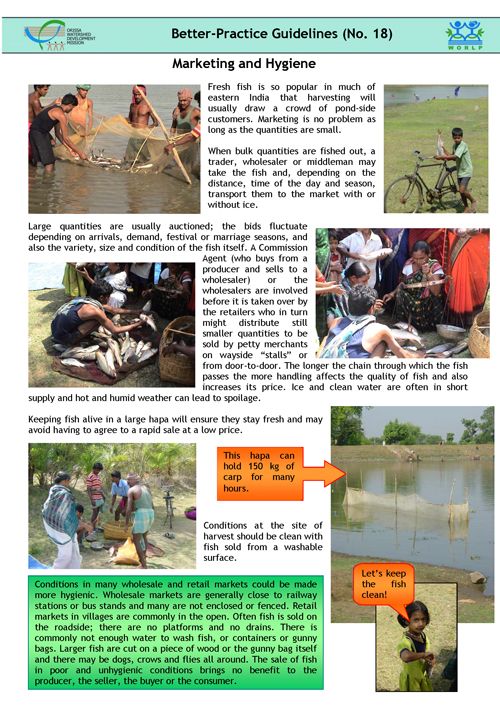Better practice guidelines: Marketing and hygiene
5 December 2005 | 684 Downloads | .pdf | 624.59 KB | Better management practices, Food Security, Safety and Certification, Inland aquaculture, Education and Training, India, Markets and trade
Fresh fish is so popular in much of eastern India that harvesting will usually draw a crowd of pond side customers. Marketing is no problem so long as the quantities are small. When bulk quantities are fished out a trader, wholesaler or a middleman may take the fish and depending on the distance, time of the day and season, transport them to the market with or without ice.
Large quantities are usually auctioned; the bids fluctuate depending on arrivals, demand, festival or marriage seasons, and also the variety, size and condition of the fish itself. A Commission Agent (who buys from a producer and sells to a wholesaler) or the wholesalers are involved before it is taken over by the retailers who in turn might distribute still smaller quantities to be sold by petty merchants on wayside “stalls” or from door-to-door. The longer the chain through which the fish passes the more handling affects the quality of fish and also increases its price. Ice and clean water are often in short supply and hot and humid weather can lead to spoilage.
Creative Commons Attribution.

